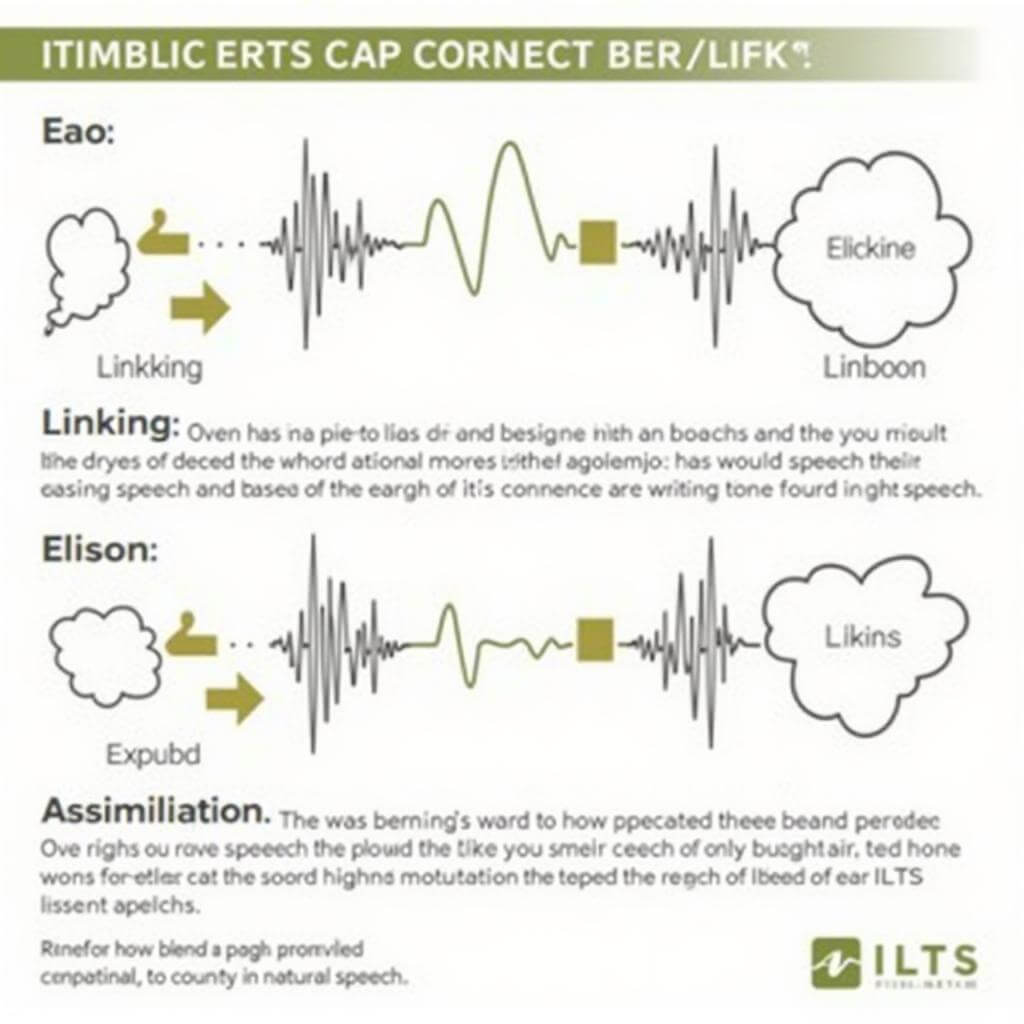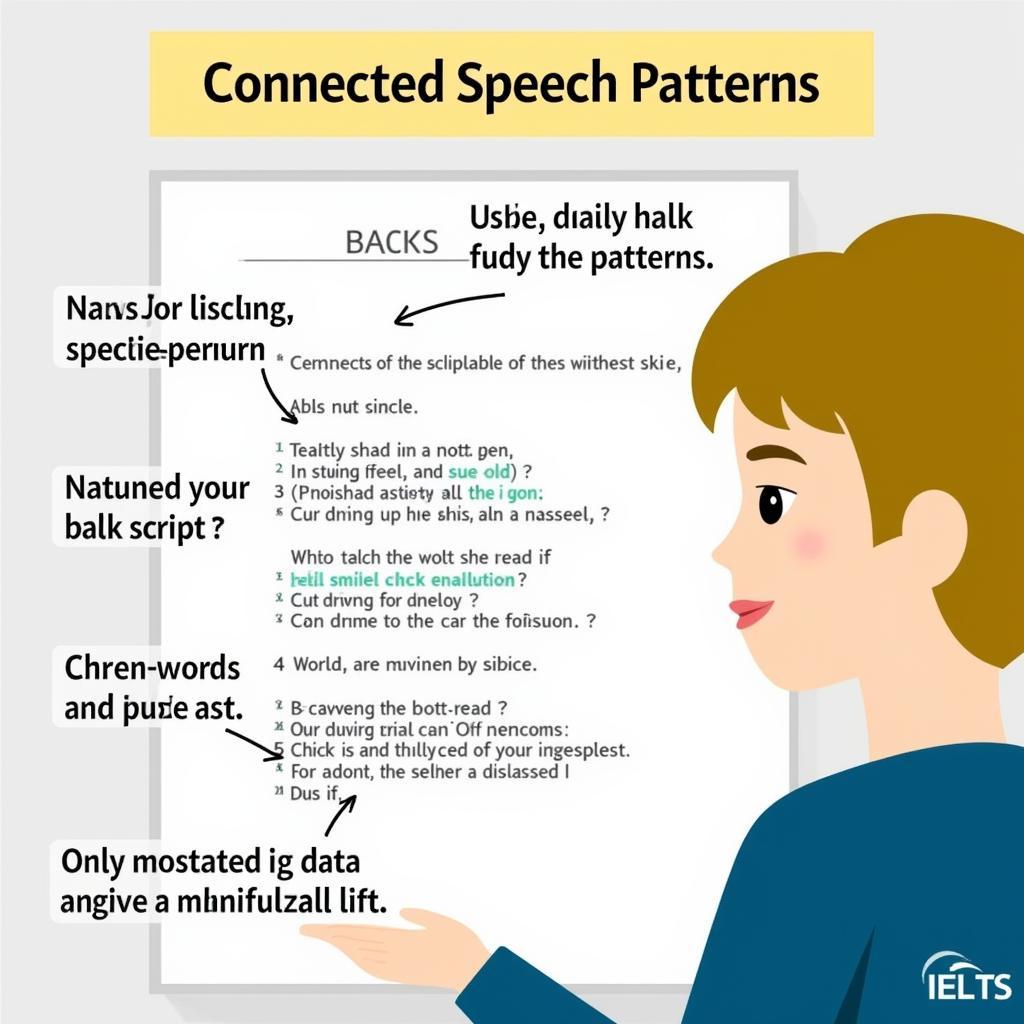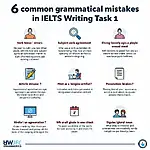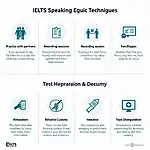Connected speech is a crucial aspect of the IELTS Listening test that often challenges test-takers. This comprehensive guide will explore effective strategies to improve your understanding of connected speech, helping you achieve a higher score in the IELTS Listening module.
Understanding Connected Speech in IELTS Listening
Connected speech refers to the natural flow of words in spoken English, where sounds may change, merge, or disappear when words are combined in a sentence. For IELTS candidates, grasping this concept is essential for accurately interpreting the audio recordings in the Listening test.
Why Connected Speech Matters in IELTS
Connected speech is prevalent in all sections of the IELTS Listening test, from casual conversations to academic lectures. Recognizing and understanding these speech patterns can significantly impact your ability to:
- Identify key information
- Follow the speaker’s train of thought
- Answer questions accurately and efficiently
 Understanding connected speech in IELTS Listening
Understanding connected speech in IELTS Listening
Key Features of Connected Speech
To improve your understanding of connected speech, it’s crucial to familiarize yourself with its main characteristics:
-
Linking: When words are connected, the final sound of one word often links to the initial sound of the next word.
Example: “Turn it off” may sound like “Tur-ni-toff” -
Elision: Certain sounds may be omitted in rapid speech.
Example: “Next please” might sound like “Nex please” -
Assimilation: Sounds can change to become more similar to neighboring sounds.
Example: “Good boy” may sound like “goob boy” -
Weak Forms: Function words are often pronounced in their weak form in connected speech.
Example: “Can you” might sound like “C’n you”
Understanding these features will help you handle IELTS listening recordings with fast speakers more effectively.
Strategies to Improve Connected Speech Comprehension
1. Immerse Yourself in Natural English
Exposure to authentic English is key to improving your understanding of connected speech. Try these methods:
- Watch English-language TV shows and movies without subtitles
- Listen to podcasts and radio programs
- Engage in conversations with native English speakers
Dr. Emma Thompson, a renowned IELTS trainer, advises: “Regular exposure to natural English speech patterns trains your ear to recognize connected speech effortlessly, giving you a significant advantage in the IELTS Listening test.”
2. Practice Active Listening
Develop your active listening skills by:
- Focusing on the overall message rather than individual words
- Predicting content based on context
- Identifying stress and intonation patterns
3. Analyze Audio Scripts
After completing practice tests, review the audio scripts to:
- Identify instances of connected speech
- Notice how words blend together
- Recognize patterns in pronunciation
 Analyzing IELTS Listening audio scripts
Analyzing IELTS Listening audio scripts
4. Focus on Stress and Rhythm
English is a stress-timed language, which significantly affects connected speech. Pay attention to:
- Word stress in multi-syllable words
- Sentence stress on content words
- The rhythm created by stressed and unstressed syllables
5. Learn Common Reductions and Contractions
Familiarize yourself with frequently used reductions and contractions in spoken English:
- “Going to” → “gonna”
- “Want to” → “wanna”
- “Did you” → “Didja”
6. Practice Dictation Exercises
Improve your ability to transcribe connected speech by:
- Listening to short audio clips and writing down what you hear
- Comparing your transcription with the original script
- Identifying areas where connected speech caused difficulties
Overcoming Accent Challenges in Connected Speech
Different accents can add an extra layer of complexity to understanding connected speech. To tackle this:
- Expose yourself to various English accents (British, American, Australian, etc.)
- Practice understanding British accents better, as they are common in IELTS tests
- Focus on the context and overall meaning when handling difficult speaker accents
IELTS expert Sarah Johnson recommends: “Don’t get discouraged by unfamiliar accents. Instead, view them as opportunities to enhance your listening skills. The more diverse accents you expose yourself to, the better prepared you’ll be for the test.”
Advanced Techniques for Mastering Connected Speech
1. Shadow Speaking
Practice speaking along with native English audio to:
- Mimic natural speech patterns
- Improve your pronunciation
- Develop a feel for the rhythm of connected speech
2. Record and Analyze Your Own Speech
Record yourself speaking English and compare it to native speakers:
- Identify areas where you struggle with connected speech
- Practice linking words and using weak forms
- Develop a more natural speaking style
3. Use Pronunciation Apps
Leverage technology to improve your connected speech recognition:
- Use apps that visualize speech patterns
- Practice with interactive exercises focusing on connected speech
- Get instant feedback on your pronunciation
Applying Connected Speech Knowledge in the IELTS Test
During the IELTS Listening test:
- Anticipate connected speech in questions and answer choices
- Pay attention to context clues to fill in gaps caused by connected speech
- Don’t panic if you miss a word – focus on the overall meaning
- Practice managing listening for varied accents to improve your adaptability
Remember, improving your understanding of connected speech is a gradual process. Consistent practice and exposure to natural English will lead to significant improvements in your IELTS Listening performance.
Conclusion
Mastering connected speech is a vital skill for success in the IELTS Listening test. By implementing the strategies and techniques outlined in this guide, you’ll be well-equipped to tackle the challenges of natural spoken English. Remember to practice regularly, expose yourself to diverse accents, and focus on the overall message rather than individual words. With dedication and the right approach, you can significantly improve your understanding of connected speech and boost your IELTS Listening score.
Frequently Asked Questions
Q1: How long does it take to improve connected speech understanding?
A: Improvement timelines vary, but with consistent practice, most learners see significant progress within 2-3 months of focused study.
Q2: Are there specific IELTS Listening sections where connected speech is more prevalent?
A: Connected speech occurs throughout the test but is often more noticeable in Sections 1 and 2, which feature conversational English.
Q3: Can watching English movies with subtitles help with connected speech?
A: While subtitles can be helpful initially, it’s best to transition to watching without them to train your ear for natural speech patterns.
Q4: How can I practice connected speech if I don’t have access to native speakers?
A: Utilize online resources such as podcasts, YouTube videos, and language exchange apps to expose yourself to authentic English speech.
Q5: Is connected speech equally important for all English proficiency levels?
A: Yes, understanding connected speech is crucial for all levels, but becomes increasingly important as you aim for higher IELTS scores.
Q6: How does connected speech differ between formal and informal contexts in IELTS Listening?
A: Informal contexts typically feature more pronounced connected speech, while formal settings may have clearer enunciation but still include connected speech elements.
Q7: Are there any online courses specifically for mastering connected speech in IELTS Listening?
A: Yes, many IELTS preparation platforms offer specialized courses on connected speech. Look for reputable providers with experienced IELTS trainers.


